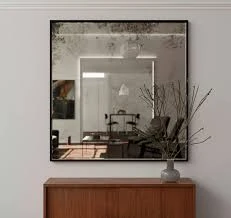

The Aesthetic and Functional Appeal of Low Iron Frosted Glass
Low iron frosted glass has become increasingly popular in contemporary architecture and interior design, owing to its unique aesthetic qualities and functional benefits. This type of glass is specially treated to reduce the presence of iron compounds, resulting in a crystal-clear appearance that allows for a higher degree of light transmission compared to standard glass. The frosted finish, achieved through sandblasting or acid etching, gives it a soft, diffused look, making it an ideal choice for various applications.
One of the most compelling features of low iron frosted glass is its ability to balance transparency and privacy. This is particularly valuable in spaces where natural light is desired, but privacy is also a concern. For instance, in office environments, glass partitions made from low iron frosted glass can create an open feel without exposing confidential conversations or sensitive work areas. In residential settings, homeowners often choose this type of glass for bathroom windows or shower enclosures, achieving a serene ambiance while preventing outside visibility.
Moreover, the aesthetic appeal of low iron frosted glass cannot be overlooked. Unlike traditional frosted glass, which can sometimes present a greenish tint due to iron content, low iron glass maintains a true, color-neutral appearance. This attribute allows it to pair seamlessly with various design styles, from minimalist and modern to rustic and industrial. Designers appreciate its versatility and the way it can elevate the elegance of a space while remaining understated.

In terms of durability, low iron frosted glass is comparable to regular glass. It offers resistance to scratching and thermal stress, making it suitable for use in environments with varying temperatures. Additionally, this type of glass is easier to clean than traditional frosted glass, as the smooth surface prevents the build-up of grime and dust in the etched patterns. Homeowners and businesses alike find this quality appealing for maintaining a clean and pristine appearance over time.
Environmental considerations also play a role in the increasing popularity of low iron frosted glass. As sustainability becomes a focal point in modern design, many manufacturers are adopting eco-friendly practices in their production processes. Low iron glass can be recycled, reducing waste and supporting a circular economy. Furthermore, its ability to maximize natural light reduces the need for artificial lighting, contributing to energy savings in buildings.
The application of low iron frosted glass extends beyond windows and partitions. It is also widely used in furniture, decorative art, and lighting fixtures. Designers are experimenting with this material to create stunning pieces that enhance the visual appeal of any space. Whether used in a dining table, an artistic photo frame, or pendant lighting, low iron frosted glass adds a touch of sophistication that resonates with modern aesthetics.
In conclusion, low iron frosted glass offers an excellent combination of functionality and beauty, making it a preferred choice for numerous applications in architecture and design. Its transparency, privacy benefits, durability, and environmental advantages resonate with modern sensibilities, providing an elegant solution for those looking to enhance their spaces. As design trends continue to evolve, low iron frosted glass is positioned to remain a coveted material that reflects both style and substance.